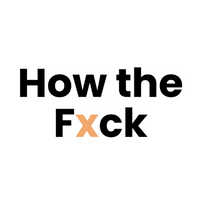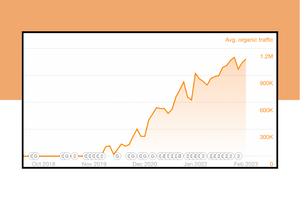The British online car retailer, Cazoo, went from launch to £6 billion IPO in ~2 years.
In this week’s SEO case study, I sat down with their former Head of Organic Performance, Andy Francos, who led SEO from the very start.
There are no hacks in this story.
A career in organic performance has crafted Andy into a customer-centric strategist, focused on:
- The user experience
- The brand
In a company destined to be a household name, it was essential to align optimization and discoverability for their key terms with clean UX and customer-centric decisions.
And, ultimately, sticking to a strong customer-centric ethos paid off.
In this case study, we delve into the interplay between national branding campaigns and search, as well as how Cazoo built its product pages around great UX.
Expect to learn
⚡ Part One: How do wider brand campaigns impact SEO (e.g. TV ads, PR, and sponsoring football teams)
⚡ Part Two: How Cazoo chose keywords (and their on-page strategy)
⚡ Part Three: Cazoo’s Traffic Growth Results
⚡ Part Four: How SEO informed product launches at Cazoo
⚡ The Role of SEO in IPOs
The Mission - Building an Automotive SEO Engine
Cazoo is an online used car marketplace designed to transform the way people buy, finance, or rent used cars.
Andy Francos joined Cazoo in September 2019, three months before the company launched in December.
Even at such an early point in the journey, Cazoo was already a well-funded startup, having come out of two rounds of funding with a total of £55M by the end of September 2019.
“It is everything I wanted in a role, to be honest. [...] The Cazoo opportunity came along and I thought at the time these opportunities don’t come around too often. So I just thought I had to take it. I have absolutely no regrets in doing so.” - Andy Francos
At the very start, Andy was faced with a blank canvas. Cazoo didn’t even have a website when he joined.
And from day one, he was focused on building an organic search strategy that was 100% customer-centric.
“I wanted to make sure that we had a customer-centric strategy that would focus on customer needs - what they want from their car buying journey - and to capitalize on that shift from offline to online.” - Andy Francos
Cazoo’s strategy was built on real customer feedback:
- Talking to customer support teams to uncover customer needs.
- Collaborating with the performance marketing team in terms of sharing data (effective keywords, audience segmentation, etc.).
- Forming focus groups to learn what customers wanted from online purchases in the automotive space.
The objectives and key results (OKRs) that Andy helped set for his team actually had nothing to do with traffic or revenue.
They were focused on more long-term, brand-building goals.
“It’s hard when you’re in year 1 and you’re going on a quarter by quarter basis. Because there was a ton of things where I would say ‘This would have an impact, but you’re not gonna see it in month 3 of Q1. So we just need to make sure that we [...] keep building a brand that customers love and really focus on that customer-centric strategy over the organic performance side.’” - Andy Francos
Instead of setting traffic-related OKRs, their objectives were to:
- Launch a content hub
- Set up a logical website and information architecture
- Establish an effective long-term content strategy
- Build authority within the automotive space
Part One: How do wider brand campaigns impact SEO
A company with the funding and ambition of Cazoo wasn’t only using SEO to grow.
They pretty much used them all:
- Organic search
- PPC
- Social media
- TV advertising
- Other traditional advertising channels (radio, print)
- Sponsorships (such as sponsoring football clubs)
Which brings up the question, how did these other brand campaigns impact SEO?
Andy notes that traditional advertising campaigns had an immense impact on organic performance.
1/ Branded search increases
Their first big TV advertising push happened around February 2020, and that is when they saw the first uptick in Cazoo branded search:
They also saw an increase in brand term + generic term searches, such as this one:
Overall, traditional ads had a twofold effect on Cazoo’s organic performance:
- Increase in brand name searches
- Increase in non-branded (generic) searches
Here is what Andy had to say about that:
“I wouldn’t say that there is any, like, magic tricks with it. You are showcasing your brand to an audience that then is engaged and wants to find out a little more. Then they go to Google to go and search for what they’ve just seen on the TV or heard on the radio.” - Andy Francos
Let’s see an example of Cazoo’s ad:


